20.08.2021
Jeff Bezos' Blue Origin targeting Aug. 25 for next spaceflight
Unlike Blue Origin's last flight, this one will be uncrewed.

Blue Origin's New Shepard suborbital vehicle launches on an uncrewed mission in December 2019. The company's next New Shepard flight is targeted for Aug. 25, 2021. (Image credit: Blue Origin)
Blue Origin is targeting Aug. 25 for the next flight of its New Shepard suborbital vehicle, company representatives announced today (Aug. 18).
The uncrewed mission is scheduled to lift off from Blue Origin's West Texas launch site at 9:35 a.m. EDT (1335 GMT; 8:35 a.m. local time) on Aug. 25. You can watch it live here at Space.com at that time, courtesy of Blue Origin, or directly via the company.
Next week's spaceflight will be the 17th overall for Blue Origin and the first since the company's debut crewed mission, which took place on July 20. On that day, a New Shepard vehicle carried company founder Jeff Bezos, his brother Mark, 82-year-old aviation pioneer Wally Funk and 18-year-old Dutch student Oliver Daemen to suborbital space and back.
The Aug. 25 mission, known as NS-17, won't carry any people, but New Shepard — a reusable rocket-capsule combo — won't be empty. The capsule will contain 18 commercial payloads, 11 of which are NASA-sponsored, as well as thousands of postcards submitted by kids via Blue Origin's nonprofit Club for the Future, company representatives said today.
In addition, the capsule's exterior will host NASA's Deorbit, Descent and Landing Sensor Demonstration experiment, a suite of technologies designed to help spacecraft land more accurately on the moon and other cosmic bodies. This will be the second Blue Origin flight for the sensor suite, which first reached suborbital space aboard New Shepard in October 2020.
And, in a first for a New Shepard mission, NS-17 will feature an art installation — Amoako Boafo's "Suborbital Tryptych." The work consists of three portraits "painted on the top of the crew capsule on the main [para]chute covers," Blue Origin representatives wrote in an NS-17 mission description. "The portraits capture the artist, his mother and a friend’s mother. The artwork is part of Uplift Aerospace’s Uplift Art Program, whose purpose is to inspire new ideas and generate dialog by making space accessible and connected to the human experience."

Blue Origin currently operates two New Shepard vehicles. One of them — the one that will lift off next week — is dedicated to flying research payloads on uncrewed missions. NS-17 will be the eighth space mission for that particular vehicle.
Blue Origin has one main competitor in the suborbital space tourism business — Virgin Galactic, which conducted its first fully crewed suborbital mission last month. Virgin Galactic flies a six-passenger, two-pilot space plane that lifts off from a runway beneath the wings of a carrier aircraft and glides back down for a runway landing at the end of each mission. New Shepard, by contrast, is fully automated, and both of its elements come back down to Earth under parachutes.
Virgin Galactic is selling seats for $450,000 apiece. Blue Origin has not yet announced how much a ride on New Shepard costs.
Quelle: SC
+++
Blue Origin leaving humans behind as next mission will carry scientific and research payloads
Jeff Bezos and his crewmates won’t be hopping aboard for a suborbital redo on the next New Shepard mission. The Amazon founder’s space venture announced Wednesday that the 17th flight of the reusable rocket ship will carry scientific and research payloads.
Blue Origin scheduled the launch for 6:35 a.m. PT on Aug. 25 from its West Texas facility. It’s the fourth flight for the program in 2021 and the eighth for this particular vehicle.
The NS-17 mission will carry NASA lunar landing technologies being tested to help reduce risk and increase confidence for successful missions to the moon. The payload, which flew in a previous experiment on Oct. 13, 2020, is mounted to the exterior of the rocket booster. According to Blue Origin, information from the first flight informed improvements to technology that determines a spacecraft’s location and speed as it approaches the surface of the moon.
Blue Origin’s continued interest and work on future moon missions comes in the wake of the company’s recent legal action against the U.S. government. Blue Origin is suing NASA over its decision to award a $2.9 billion contract to Elon Musk’s SpaceX to build what would be the first lunar lander to carry astronauts to the moon since the Apollo era.
NS-17 will also carry 18 commercial payloads inside the crew capsule, 11 of which are NASA supported.
The rocket will also have another unique payload on the exterior — an art installation called “Suborbital Tryptych,” a series of three portraits by Ghanaian artist Amoako Boafo painted on the top of the crew capsule on the main chute covers. “The portraits capture the artist, his mother, and a friend’s mother … and is part of Uplift Aerospace’s Uplift Art Program, whose purpose is to inspire new ideas and generate dialog by making space accessible and connected to the human experience,” Blue Origin said.
Bezos and three crewmates took a 10-minute ride as the first humans aboard a New Shepard ship on July 20.
Quelle: GeekWire
+++
New Shepard Mission NS-17 Launch Updates
New Shepard Payload Mission NS-17 to Fly NASA Lunar Landing Experiment and Art Installation
New Shepard’s next mission will fly a NASA lunar landing technology demonstration a second time on the exterior of the booster, 18 commercial payloads inside the crew capsule, 11 of which are NASA-supported, and an art installation on the exterior of the capsule. Liftoff is currently targeted for Wednesday, August 25, at 8:35 am CDT / 13:35 UTC from Launch Site One in West Texas. Live launch coverage begins at T-30 minutes on BlueOrigin.com.
This will be the 17th New Shepard mission to date, the 4th flight for the program in 2021, and the 8th flight for this particular vehicle, which is dedicated to flying scientific and research payloads to space and back.
To date, New Shepard has flown more than 100 payloads to space across 11 flights.
NS-17 Flight Manifest Highlights:
NASA: Deorbit, Descent, and Landing (DDL) Sensor Demonstration
Under a Tipping Point partnership with NASA’s Space Technology Mission Directorate, the NS-17 flight will further test a suite of lunar landing technologies to reduce risk and increase confidence for successful missions to the Moon. The payload will fly mounted on the exterior of the New Shepard booster. This is the second flight for this experiment.
Knowledge gained from the first flight on October 13, 2020 informed a series of critical improvements to further the capabilities of the Navigation Doppler Lidar and the Descent Landing Computer, which would work together to determine a spacecraft’s location and speed as it approaches the surface of the Moon. The technologies could allow future missions—both crewed and robotic—to target landing sites that weren’t possible during the Apollo missions, such as regions with varied terrain near craters.
The datasets derived from the first flight, including the vehicle truth data and the recorded raw payload sensor data were open sourced earlier this year on data.nasa.gov in service of broader support for U.S. interests in returning to the Moon. An additional dataset from this mission will be open sourced as well.
First Art Installation on New Shepard: Suborbital Tryptych
Unique to NS-17, New Shepard will feature Suborbital Tryptych, which is a series of three portraits by Ghanaian artist Amoako Boafo painted on the top of the crew capsule on the main chute covers. The portraits capture the artist, his mother, and a friend’s mother. The artwork is part of Uplift Aerospace’s Uplift Art Program, whose purpose is to inspire new ideas and generate dialog by making space accessible and connected to the human experience.
Carthage College: The Modal Propellant Gauging Experiment
The Modal Propellant Gauging experiment demonstrates a novel approach to measuring propellant levels in spacecraft propellant tanks in the microgravity environment of space. The payload experiment is a joint effort of the Carthage College Space Sciences program and the NASA Kennedy and Johnson Space Centers. Funding was provided by the NASA Flight Opportunities Program and by the Wisconsin Space Grant Consortium.
NASA Kennedy Space Center: The Orbital Syngas / Commodity Augmentation Reactor (OSCAR)
The Orbital Syngas / Commodity Augmentation Reactor (OSCAR) payload from NASA’s Kennedy Space Center is a reflight of a full stack experiment flown on NS-12. OSCAR aims to help transform common spaceflight waste products into useful resources, such as water and propellants. The system includes a steam generation stage and an oxygen supply stage that help process trash samples into useful gases. Here is a link to a video about the OSCAR payload.
Southwest Research Institute: Liquid Acquisition Device (LAD-3)
Developed by Southwest Research Institute in San Antonio, TX, the Liquid Acquisition Device (LAD-3) demonstrates how liquid/vapor interfaces behave in microgravity. Applications include cryogenic propellant storage and management for in-space propulsion systems. Funding was provided by NASA’s Flight Opportunities Program. NS-17 will be the third flight of this payload on New Shepard, and will study bubble movement with modified hardware designs.
University of Florida: Biological Imaging in Support of Suborbital Science
Investigators Rob Ferl and Anna-Lisa Paul adapted technology designed for the International Space Station to suborbital uses with their experiment, “Biological Imaging in Support of Suborbital Science.” By further calibrating and enhancing the way data is collected, the FLEX fluorescence imaging system experiment enables increasingly precise and dynamic biological research on suborbital missions. This will be the third flight of the experiment development series on New Shepard. Funding was provided by the NASA Flight Opportunities Program.
Club for the Future
This mission will also fly thousands of postcards from Blue Origin’s foundation, Club for the Future.
Quelle: BLUE ORIGIN
----
Update: 25.08.2021
.
Jeff Bezos' Blue Origin targeting Aug. 26 for next spaceflight
Unlike Blue Origin's last flight, this one will be uncrewed.
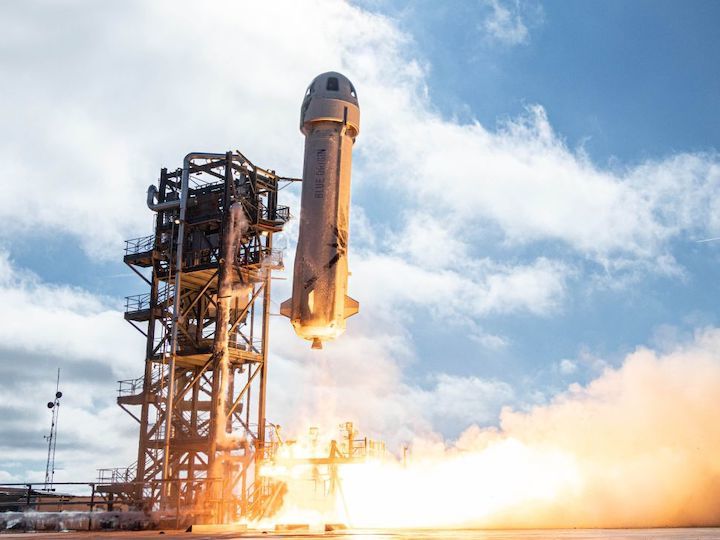
Blue Origin's New Shepard suborbital vehicle launches on an uncrewed mission in December 2019. The company's next New Shepard flight is targeted for Aug. 26, 2021. (Image credit: Blue Origin)
Update for 4 p.m. ET on Aug. 23: Blue Origin announced today (Aug. 23) that it has pushed the target date for its uncrewed NS-17 mission back 24 hours, to Aug. 26 at 9:35 a.m. EDT (1335 GMT).
Blue Origin is targeting Aug. 25 for the next flight of its New Shepard suborbital vehicle, company representatives announced today (Aug. 18).
The uncrewed mission is scheduled to lift off from Blue Origin's West Texas launch site at 9:35 a.m. EDT (1335 GMT; 8:35 a.m. local time) on Aug. 25. You can watch it live here at Space.com at that time, courtesy of Blue Origin, or directly via the company.
Next week's spaceflight will be the 17th overall for Blue Origin and the first since the company's debut crewed mission, which took place on July 20. On that day, a New Shepard vehicle carried company founder Jeff Bezos, his brother Mark, 82-year-old aviation pioneer Wally Funk and 18-year-old Dutch student Oliver Daemen to suborbital space and back.
The Aug. 25 mission, known as NS-17, won't carry any people, but New Shepard — a reusable rocket-capsule combo — won't be empty. The capsule will contain 18 commercial payloads, 11 of which are NASA-sponsored, as well as thousands of postcards submitted by kids via Blue Origin's nonprofit Club for the Future, company representatives said today.
In addition, the capsule's exterior will host NASA's Deorbit, Descent and Landing Sensor Demonstration experiment, a suite of technologies designed to help spacecraft land more accurately on the moon and other cosmic bodies. This will be the second Blue Origin flight for the sensor suite, which first reached suborbital space aboard New Shepard in October 2020.
And, in a first for a New Shepard mission, NS-17 will feature an art installation — Amoako Boafo's "Suborbital Tryptych." The work consists of three portraits "painted on the top of the crew capsule on the main [para]chute covers," Blue Origin representatives wrote in an NS-17 mission description. "The portraits capture the artist, his mother and a friend’s mother. The artwork is part of Uplift Aerospace’s Uplift Art Program, whose purpose is to inspire new ideas and generate dialog by making space accessible and connected to the human experience."
Blue Origin currently operates two New Shepard vehicles. One of them — the one that will lift off next week — is dedicated to flying research payloads on uncrewed missions. NS-17 will be the eighth space mission for that particular vehicle.
Blue Origin has one main competitor in the suborbital space tourism business — Virgin Galactic, which conducted its first fully crewed suborbital mission last month. Virgin Galactic flies a six-passenger, two-pilot space plane that lifts off from a runway beneath the wings of a carrier aircraft and glides back down for a runway landing at the end of each mission. New Shepard, by contrast, is fully automated, and both of its elements come back down to Earth under parachutes.
Virgin Galactic is selling seats for $450,000 apiece. Blue Origin has not yet announced how much a ride on New Shepard costs.
Quelle: SC
----
Update: 28.08.2021
.
Record-Setting New Shepard Launches Postcards, Lunar Landing Tech, Art to Edge of Space

Barely five weeks since it triumphantly lifted four humans beyond the “Kármán Line” and the internationally-recognized edge of space, a cargo-only variant of Blue Origin’s New Shepard booster rose from Launch Site One in West Texas at 9:31 a.m. CDT Thursday. The “NS3” vehicle—flying an impressive eighth time since its maiden voyage back in December 2017—roared smoothly uphill, laden with a mixed bag of postcards, artwork and science. With Thursday’s successful launch, NS3 has now delivered dozens of research, technology and educational payloads to suborbital space and having wrapped up its eighth mission now stands as Blue Origin’s undisputed fleet-leader. Designated NS-17, the mission was also the 17th consecutive successful launch of a New Shepard booster.
Despite its impressive credentials, NS3 is one of four New Shepard boosters (two of which have now been retired) which, including today’s flight, have launched 17 times since April 2015. The NS1 vehicle flew the program’s first mission six years ago, satisfactorily passing an altitude of 62.4 miles (100.5 km), but a loss of hydraulic pressure during descent meant it was not recovered.
NS2 fared better, flying five times between November 2015 and its own retirement in October 2016, during which it became the first suborbital-class booster to return from space and achieve a vertical landing. It also saw important advances as Blue Origin tested its Crew Capsule, parachutes and in-flight abort system.
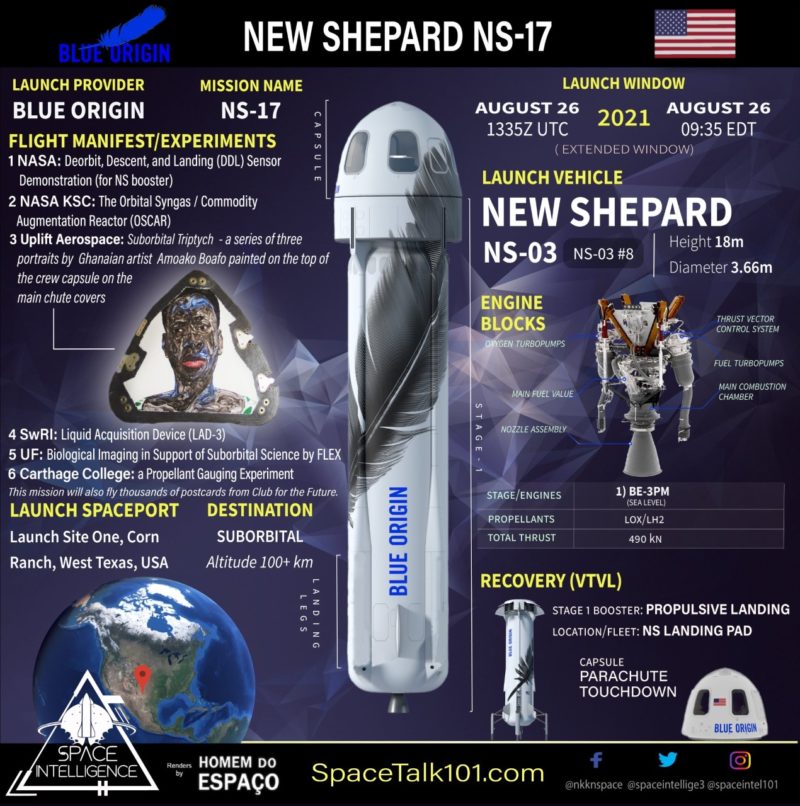
Following the loss of NS1 and the retirement of NS2, the “new kid on the block”—NS3—duly showed up for work and officially entered active service on 12 December 2017. It test-flew an upgraded Crew Capsule, laden with 12 commercial, research and educational payloads, and achieved a peak apogee of almost 61 miles (98 km).
Four months later, on 29 April 2018, NS3 launched a second time and reached 66.5 miles (107 km), setting a new “personal best” for the highest altitude attained by a New Shepard booster at that point. This amply demonstrated its ability to reach the altitude targeted for passenger-carrying flights and also featured the “Mannequin Skywalker” test dummy.
For this second flight, NS3’s Crew Capsule was packed with a variety of payloads from U.S. and European researchers. NASA’s Suborbital Flight Experiment Monitor (SFEM)-2 collected environmental data within the capsule (including carbon dioxide levels, pressures, acceleration parameters and acoustics) to prepare for future missions.
Other payloads included a Wi-Fi technology demonstrator, named in honor of Apollo 17 Moonwalker Harrison “Jack” Schmitt, and the German-funded Daphnia experiment to understand the effects of microgravity upon gene expression in daphnia water-fleas.
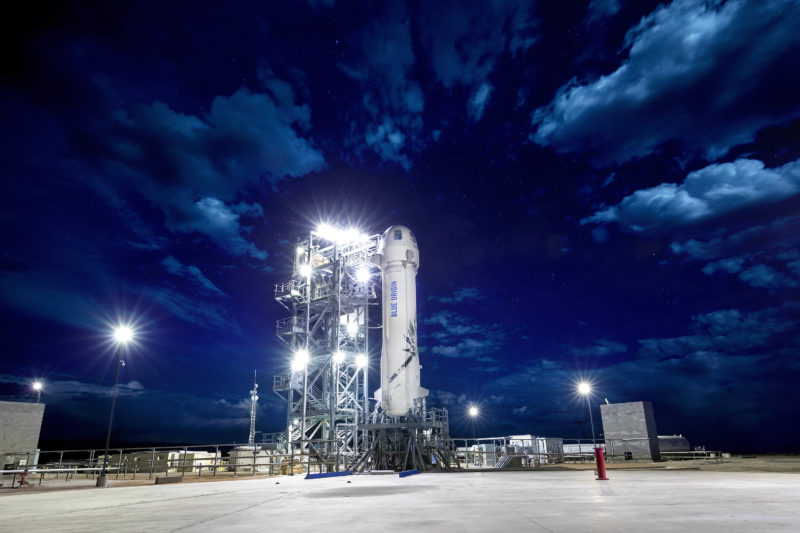
The latter formed part of a broader research thrust looking at designing future bioregenerative life-support mechanisms for deep-space exploration. Another German-led experiment, Euphorie, used a laser to examine the interaction of light on solid particles suspended in a gas to better understand Solar System evolution and meteorite formation.
NS3’s third mission on 18 July 2018 achieved the highest altitude of any New Shepard booster so far: 73.8 miles (118.8 km). The Schmitt technology demonstrator was aboard for the second time, as was SFEM-2. They were accompanied by German experiment to improve theoretical awareness of the mechanics of large-scale phenomena, from avalanches to cosmic dust clouds, and a Purdue University study of water droplets as part the development of high-efficiency heat-transfer mechanisms.
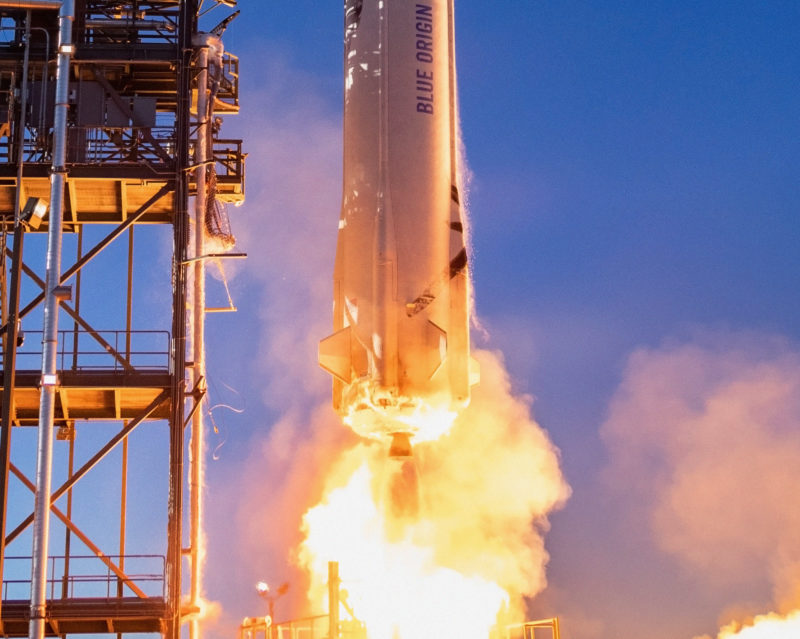
A fourth flight on 23 January 2019 saw NS3 lift eight NASA technology demonstration payloads to the edge of space. These included an experimental vibration isolation system, a study of electromagnetic fields inside and surrounding New Shepard in flight and a novel mechanism for cooling electronics in space.
Thirty-eight payloads rode uphill on NS3’s fifth flight on 2 May 2019 and on its record-setting sixth mission the following 11 December its cargo included artwork from middle- and high-school students.
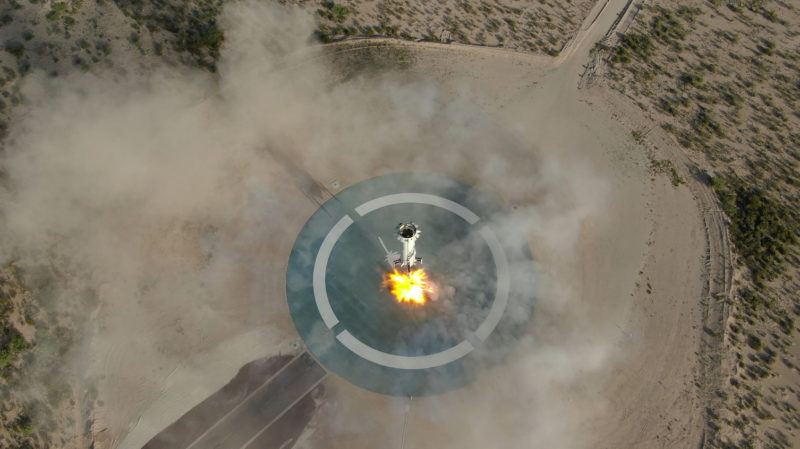
Most recently, last 13 October, NS3 logged its seventh trek uphill, notably carrying the Deorbit, Descent and Landing Sensor Demonstration (DDL) under for NASA’S Space Technology Mission Directorate, under a Tipping Point partnership. This marked the first externally-mounted New Shepard payload and evaluated precision technologies for future lunar landings. Specifically, DDL trialed a range of sensors, computers and algorithms to determine a spacecraft’s velocity and location during its descent to the Moon, allowing it to land autonomously within 330 feet (100 meters) of its designated target.
“Today’s flight was inspiring,” Blue Origin CEO Bob Smith said of the 13 October 2020 mission. “Using New Shepard to simulate landing on the Moon is an exciting precursor to what the Artemis Program will bring to America.”
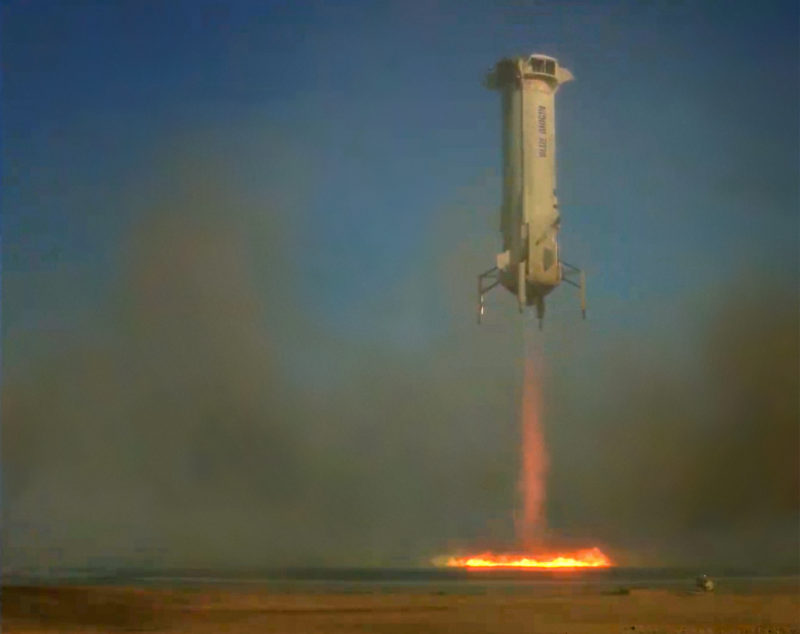
The maiden flight of DDL reportedly informed several critical improvements to further the capabilities of the Navigation Doppler Lidar and Descent Landing Computer; improvements which were put into practice today as the hardware flew a second time.
“The technologies could allow future missions—both crewed and robotic—to target landing sites that weren’t possible during the Apollo missions, such as regions with varied terrain near craters,” Blue Origin noted. “Achieving high-accuracy landing will enable long-term lunar exploration and future Mars missions.”
Alongside the second flight of DDL, today’s flight of NS3 also carried thousands of postcards from Blue Origin’s non-profit Club for the Future foundation. Additionally, a trio of portraits created by award-winning Ghanaian artist Amoako Boafo—called the “Suborbital Triptych”—were painted atop the Crew Capsule, on the composite panels which cover its main parachutes. The portraits captured the 37-year-old Boafo himself, together with his own mother and the mother of his childhood friend and fellow artist, Otis Kwame Kye Quaicoe. Plans to fly the triptych were announced last fall.
“I grew up knowing the sky was the limit and now I get to work on a project that goes beyond the sky as we know it,” Boafo explained. “This signifies what is possible when creatives like myself are given the chance to not only break the glass ceiling, but go above it.” He added that the triptych offered a respectful tip of the hat to his mother, who provided “a backbone in shaping my dreams as an artist”, and as “an ode to motherhood, for there are not enough words that best describe a mother’s love and support”.
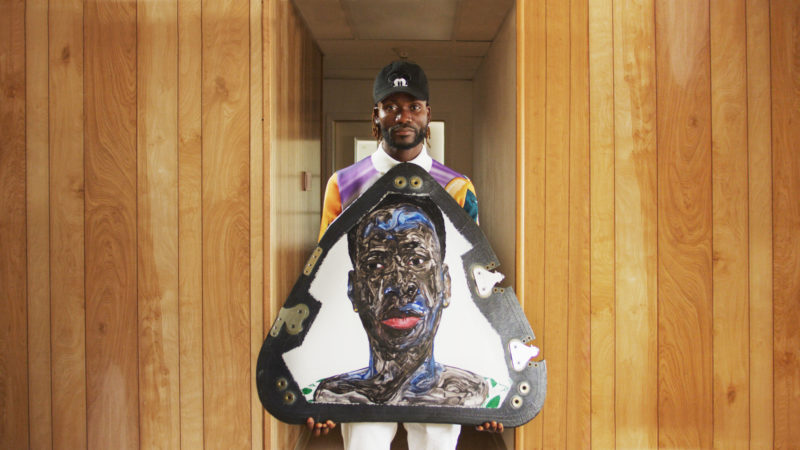
To complete the triptych, Boafo worked with a high-grade paint that can survive the rigors of launch and ascent, as well as changeable thermal conditions at extreme altitude. He reflected that it possessed “an unusually strong smell”, which required him to wear a nose-mask whilst using it, and its watery nature also meant the panels had to be laid flat on a table to avoid unwanted marks. “As it dried so fast,” Boako added, “I had to work quickly to avoid it drying before the painting was done.” He has kept specimens of the gold, bronze and silver paints and intends to use them in future artwork pieces.
Boafo’s work was selected for flight as part of Park City, Utah-based Uplift Aerospace’s Uplift “Art x Space Program”, which seeks to inspire new ideas and generate dialog by making spaceflight more accessible and connected to real human experiences. It is expected that Boafo’s triptych will be curated for display after its return from flight. “Artists have a unique capacity to evoke fresh perspectives and interpret unfamiliar terrain,” said Uplift Aerospace CEO Josh Hanes. “The profound strength of Amoako’s portraits for the first Suborbital Triptych will bring another dimension to the power that propels the New Shepard rocket.”
“It’s an honor to be invited to a project of this latitude,” said Boafo, who has studios in Accra, capital of his homeland of Ghana, and in the Austrian capital, Vienna. “To create a painting that will launch into space is unimaginable and frankly surreal. I wish one day to experience what my characters will see.”
A repeat flyer on today’s mission was the NASA-funded Modal Propellant Gauging (MPG) experiment to demonstrate innovative ways of measuring fuel and oxidizer levels in propellant tanks in space. In the microgravity environment, traditional measurements are rendered difficult or need indirect computing methods and additional hardware to achieve results. Developed jointly between NASA and Carthage College in Kenosha, Wisc., MPG employs a non-invasive, indirect fuel-gauging technique known as Experimental Modal Analysis (EMA), which uses real-time monitoring of the tank’s resonant acoustic modes.
Also flying again was NASA’s Orbital Syngas/Commodity Augmentation Reactor (OSCAR), which seeks to reuse common waste products by using heat and an oxygen supply stage to create usable resources, like water and propellant. The third New Shepard mission of the Liquid Acquisition Device (LAD-3)—provided by Southwest Research Institute (SwRI)—formed part of an ongoing campaign to assess liquid/vapor interface characteristics in microgravity, as part of efforts to develop new cryogenic storage and propulsion management systems. And the University of Florida’s Flex fluorescence imaging system allowed for highly precise biological observations as part of the third Biological Imaging in Support of Suborbital Science investigation.
Following an otherwise uneventful countdown on Thursday, liftoff was targeted for 8:35 a.m. CDT. However, the clock halted at T-9 minutes and 53 seconds and was held for more than 18 minutes, before Blue Origin resumed counting at 8:44 a.m. CDT. During the final minute of the countdown, NS3 ran autonomously through checks of its hypersonic grid-fins and flight surfaces, before the clock again halted at T-1 minute and 15 seconds, reportedly due to “a payload readiness issue”. Shortly after 9 a.m., the clock was recycled back to T-10 minutes and held again until 9:21 a.m., when the count resumed again.
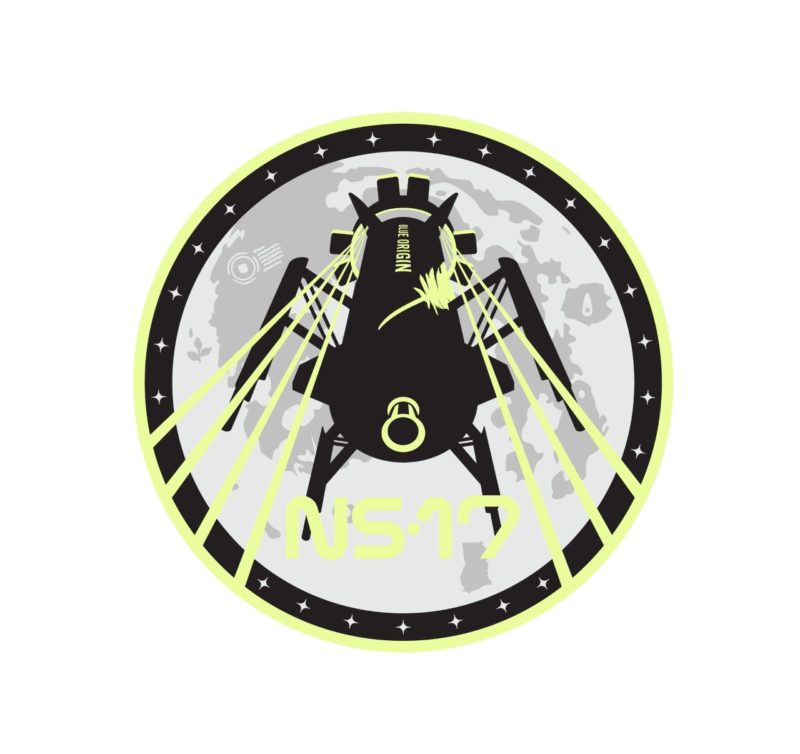
“Guidance Internal” came the call at T-16 seconds, followed by “Command Engine Start” as New Shepard’s powerful BE-3 engine roared to life with a combined thrust of 110,000 pounds (50,000 kg). The booster sprang perfectly away from Launch Site One and ascended rapidly into the crystalline West Texas skies, smoothly passing the period of maximum aerodynamic turbulence—“Max Q”—a minute into the flight. The BE-3 shut down as intended at 2.5 minutes after launch and the booster and Crew Capsule separated a few seconds thereafter. Maximum ascent velocity was 2,232 mph (3,592 km/h).
Separated from one another, the more aerodynamically streamlined NS3 commenced its return to a picture-perfect touchdown on Blue Origin’s landing pad at T+7 minutes and 30 seconds. It announced its arrival with a rip-roaring sonic boom, which echoed across the dessicated landscape.
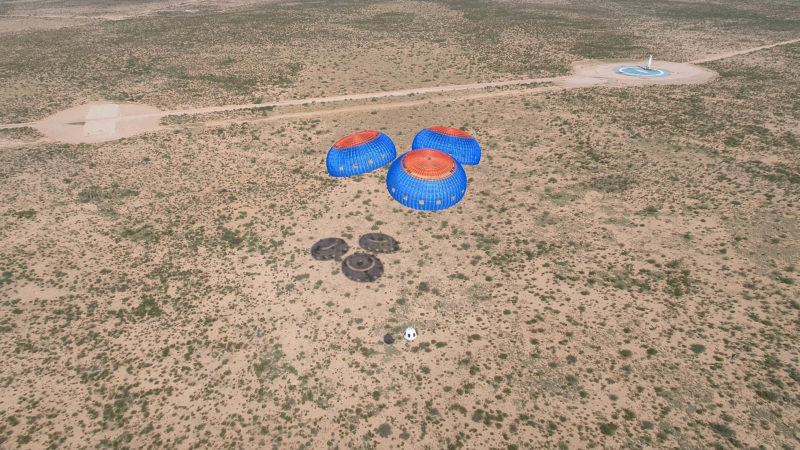
Next came the turn of the Crew Capsule, brimming with science, but on this occasion, alas, not with humans. The drogue parachutes were deployed at T+8 minutes and 20 seconds, followed by the three beautiful red-and-blue main canopies about 15 seconds later. Touching down smoothly after a flight lasting 10 minutes and 15 seconds, the Crew Capsule recorded a peak altitude of 347,430 feet (105,619 meters), equivalent to about 65.8 miles.
Under the U.S. definition, any vehicle exceeding 50 miles (80 km)—roughly the transitional zone between the mesosphere and thermosphere—is classified as having passed the lowermost “edge” of space. But the Fédération Aéronautique Internationale (FAI) notches this threshold a little higher at 62 miles (100 km), at the “Kármán Line”. This is named after Theodore von Kármán, a Hungarian-American engineer who first described it as the altitude at which the atmosphere is too thin for aeronautical purposes, since vehicles would need to travel faster than orbital velocity to achieve sufficient lift.
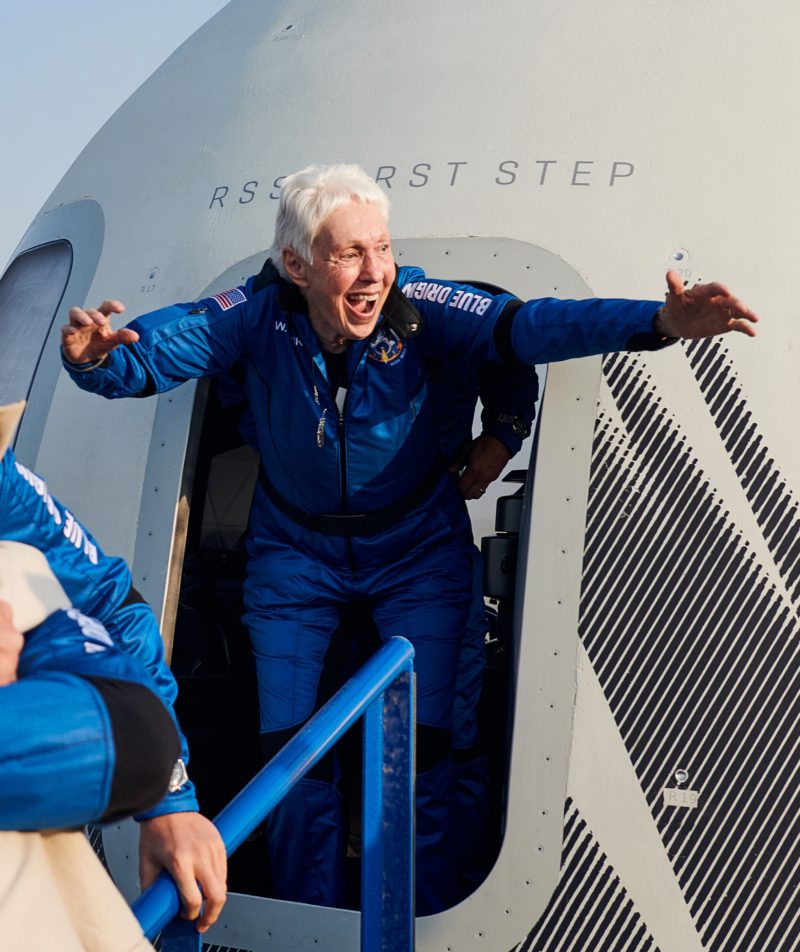
In any case, NS3 soundly soundly eclipsed both limits today. Blue Origin has yet to announce its New Shepard flight manifest moving forward, although after last month’s historic launch of Jeff Bezos, Mark Bezos, Wally Funk and Oliver Daemen it was revealed that the crew-carrying NS4 vehicle was targeting a second flight in late September.
The crew complement for that mission remains to be seen, although there can be no shortage of volunteers, including from within Blue Origin itself. Indeed, the two presenters for today’s launch webcast—Jacki Cortese, senior manager of civil space government relations, and the organization’s director of astronaut and NASA sales Kiah Erlich—went to some lengths to half-joke about their shared dream to fly New Shepard someday. So too did Ariane Cornell, Blue Origin’s head of astronaut and orbital sales, in her coverage of last month’s crewed mission.
Quelle: AS
